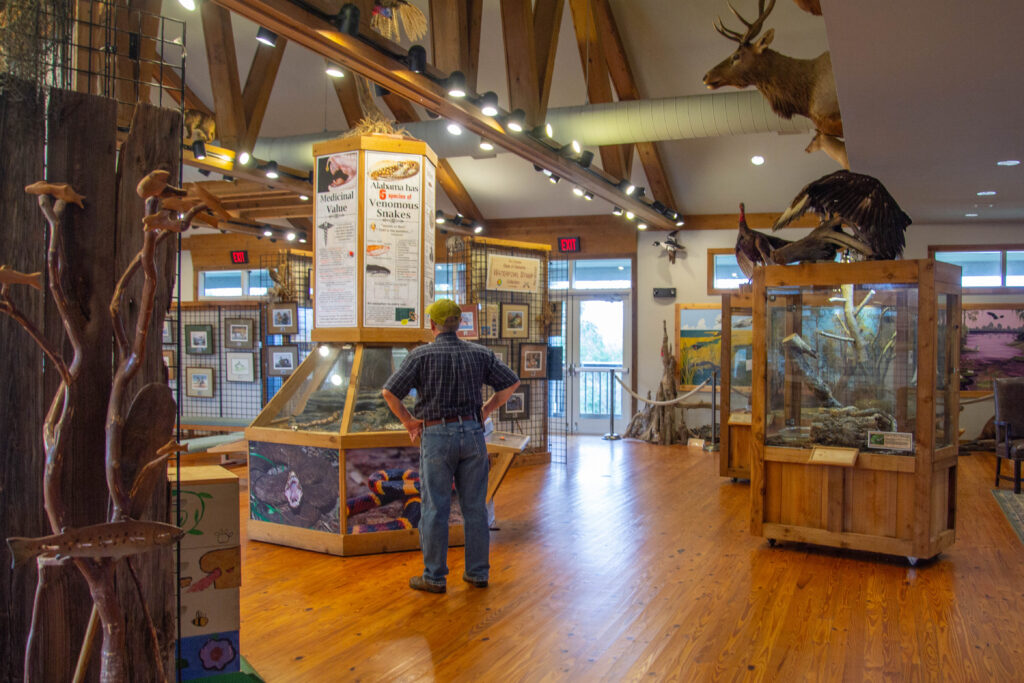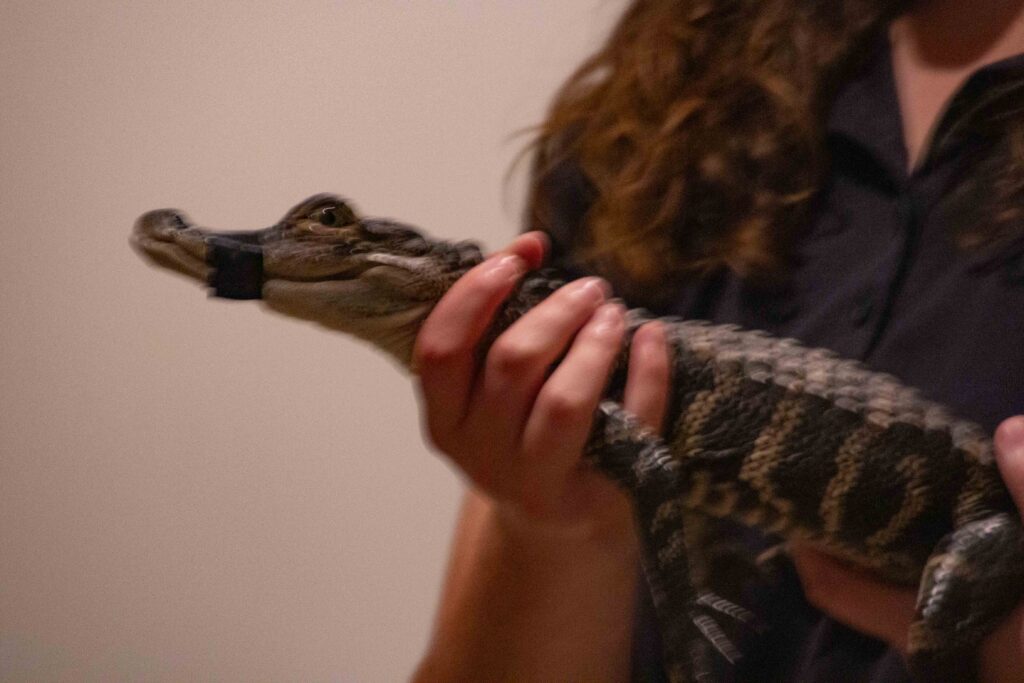Did you know that more plants and more species of aquatic creatures live in Alabama than in any other state in the United States? When we planned to spend a month exploring the Alabama Coastal Connection National Scenic Byway last winter, little did we know we were headed to the most diverse ecosystem in the country. We learned plenty about Alabama’s ecosystem as we visited parks, museums, and nature preserves along the byway. But we also enjoyed many historical and cultural attractions on or near the 130-mile byway route.
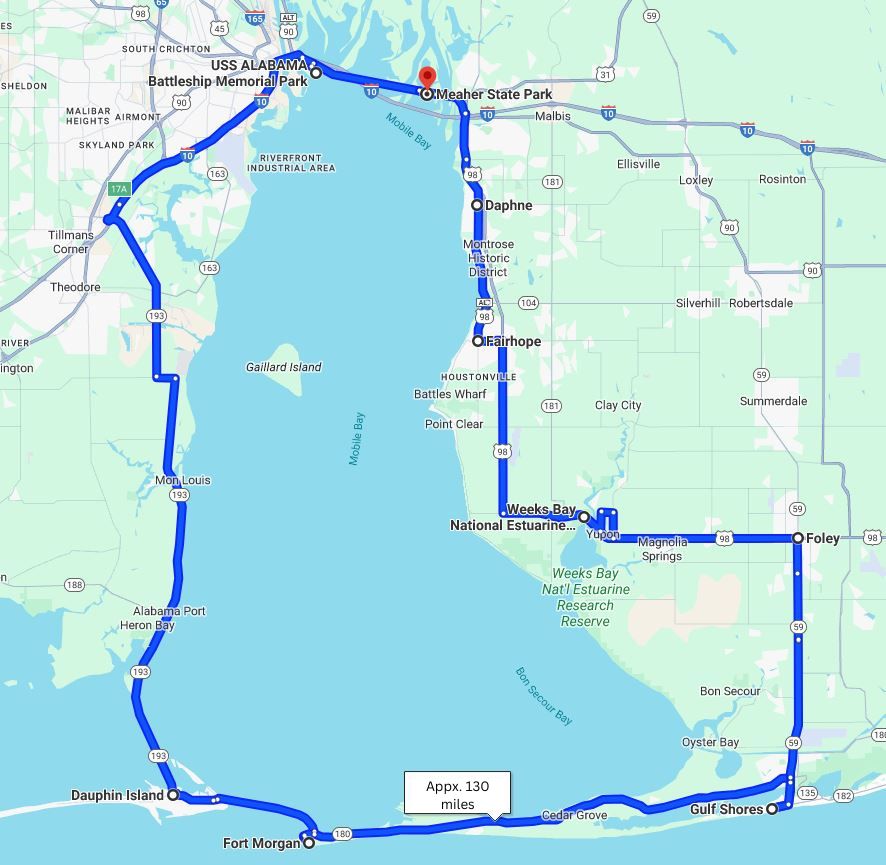
Here are 20 places we visited along the Alabama Coastal Connection National Scenic Byway that we recommend. Although we stayed in one place and took day trips to attractions along or near the byway, for the sake of this article, we are presenting the attractions in counter-clockwise order along the circle tour. We begin at the north central point of the byway, at Meaher State Park, our home during our 28-day Alabama visit.
1. Meaher State Park
Located off the U.S. 98 causeway that spans the north end of Mobile Bay, Meaher State Park is surrounded by river and bay waters, perfect for fishing and kayaking. Since we aren’t anglers and I won’t kayak in waters that have alligators, we simply enjoyed walks in the park and the fiery winter sunsets off the fishing pier.
Besides the fishing pier, another boardwalk extends out over the brackish delta waters. One afternoon, we joined Chloe, the park’s naturalist, on the boardwalk for a nature talk. As we walked, Chloe pointed out animal and plant life. She explained what is indigenous and what plants and animals are invasive.
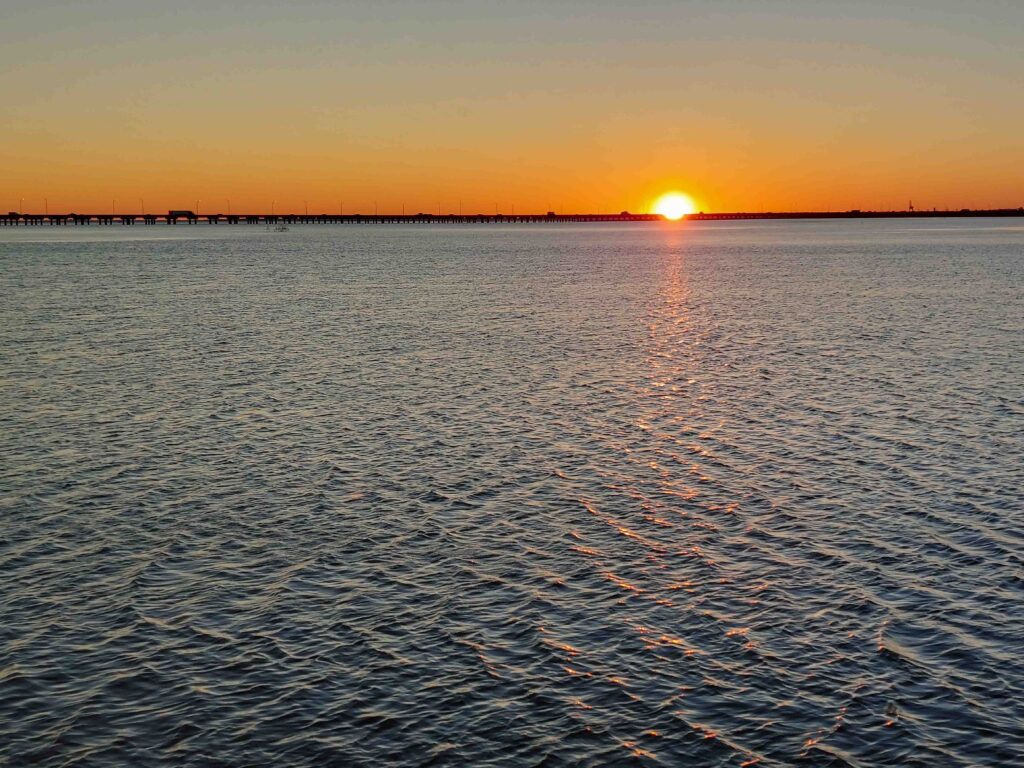
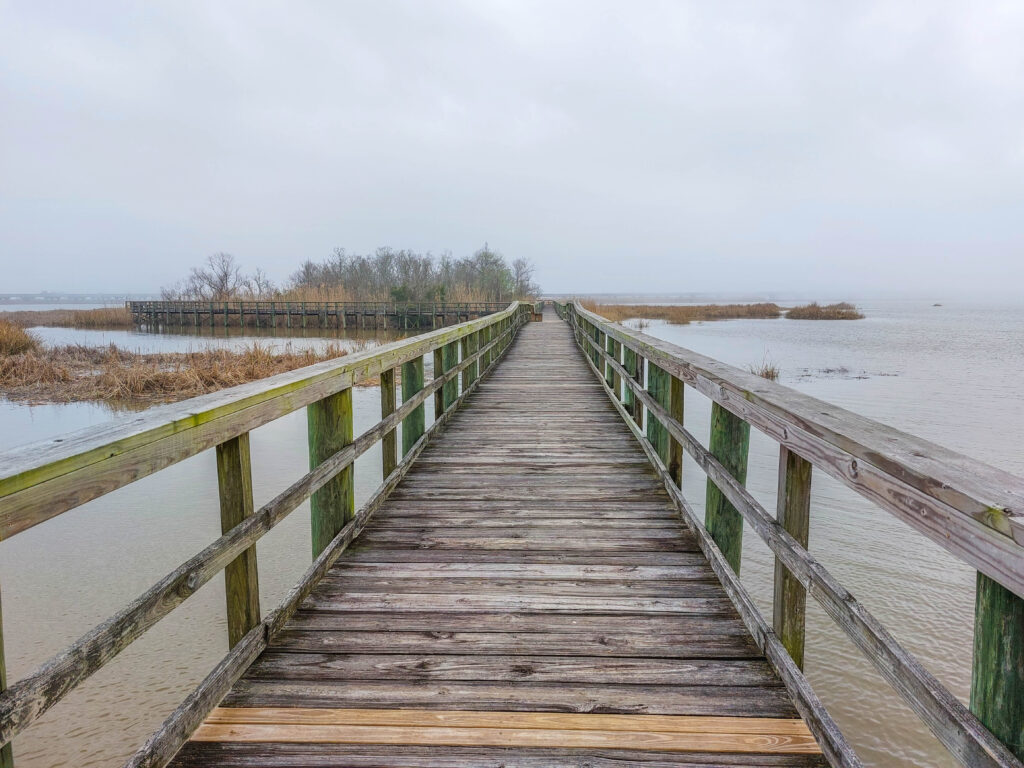
2. 5 Rivers Delta Resource Center
Directly across the highway from Meaher State Park is the 5 Rivers Delta Resource Center. The center includes several walking trails and a nature center with a theater. We watched the film in the theater on a day when it was too foggy to venture anywhere far. The film is where we first learned about the area’s diverse ecosystem.
A couple of interesting takeaways:
- Nowhere in the world are there more kinds of salamanders than in Alabama’s deltas. In fact, the red hill salamander is so rare that it lives only in Alabama’s soft limestone bluffs.
- The Mobile River basin also has more species of turtles than anywhere in the world, including the Amazon and the Nile.
Being such close neighbors, Meaher State Park sometimes uses the 5 Rivers theater for presentations. We attended one of those presentations, presented by naturalist Chloe, on the topic of alligators. The special guest was a two-foot baby alligator.
Fun Fact: Like sharks, alligators regrow teeth they lose. They grow about 3,000 teeth during their lifetime and have about 85 at one time.
3. Delta Explorer Cruises
5 Rivers Delta Resource Center is also the location for boarding some of the Delta Explorer cruises. The Delta Explorer is an excursion boat run by Historic Blakeley State Park in nearby Spanish Fort, Alabama. We took the 90-minute narrated Delta Discovery Tour. Although we didn’t see any alligators on our tour, we did see several birds and we enjoyed the cruise on the Mobile-Tensaw Delta.
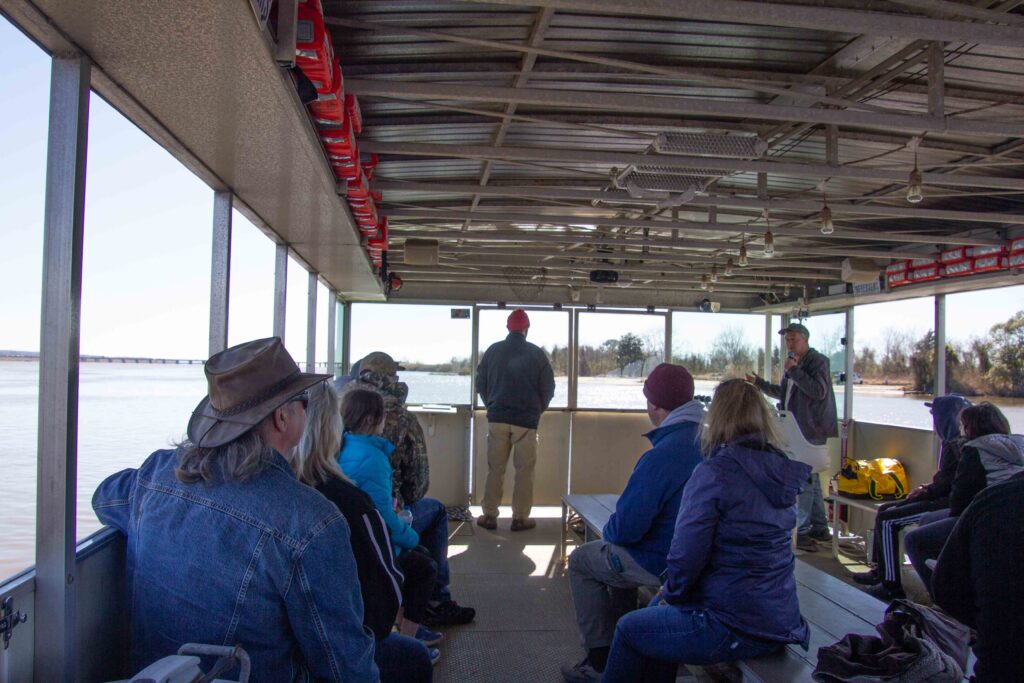
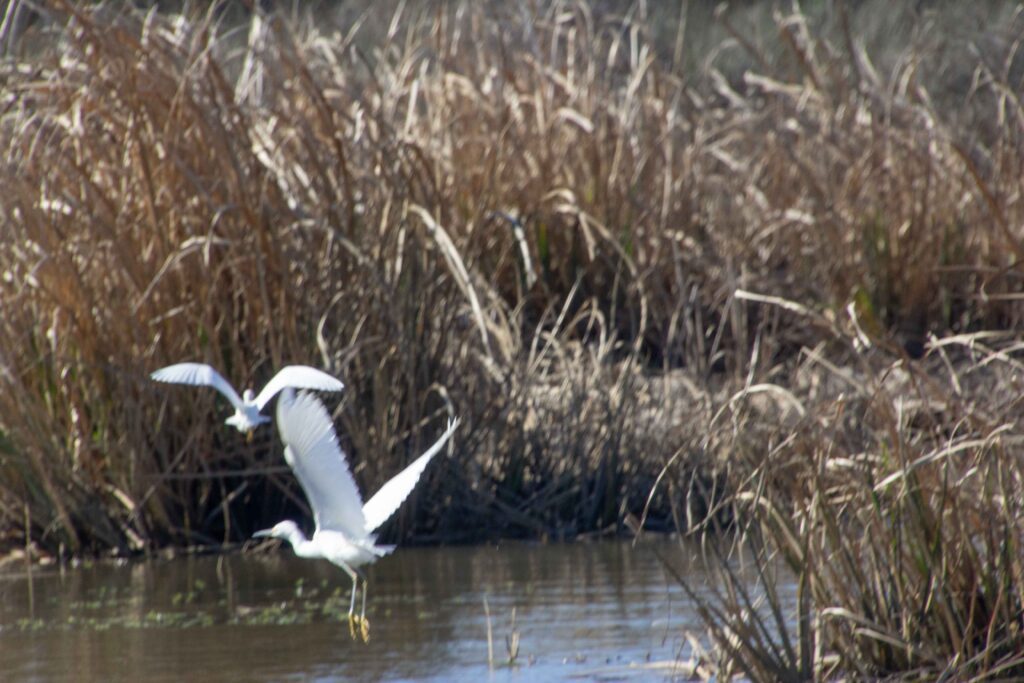
4. USS Alabama
Located on the U.S. 90 causeway just down the street from Meaher State Park, the USS Alabama Battleship Memorial Park was the first attraction we visited along the Alabama Coastal Connection National Scenic Byway. A must-see for military buffs, the park includes not only the World War II era USS Alabama Battleship, but also the USS Drum Submarine and many military aircraft and vehicles outdoors and in the indoor aircraft pavilion. We expected to spend a couple hours there. Instead, we were there for six hours.
See our full blog post: Touring the USS Alabama Battleship Memorial Park
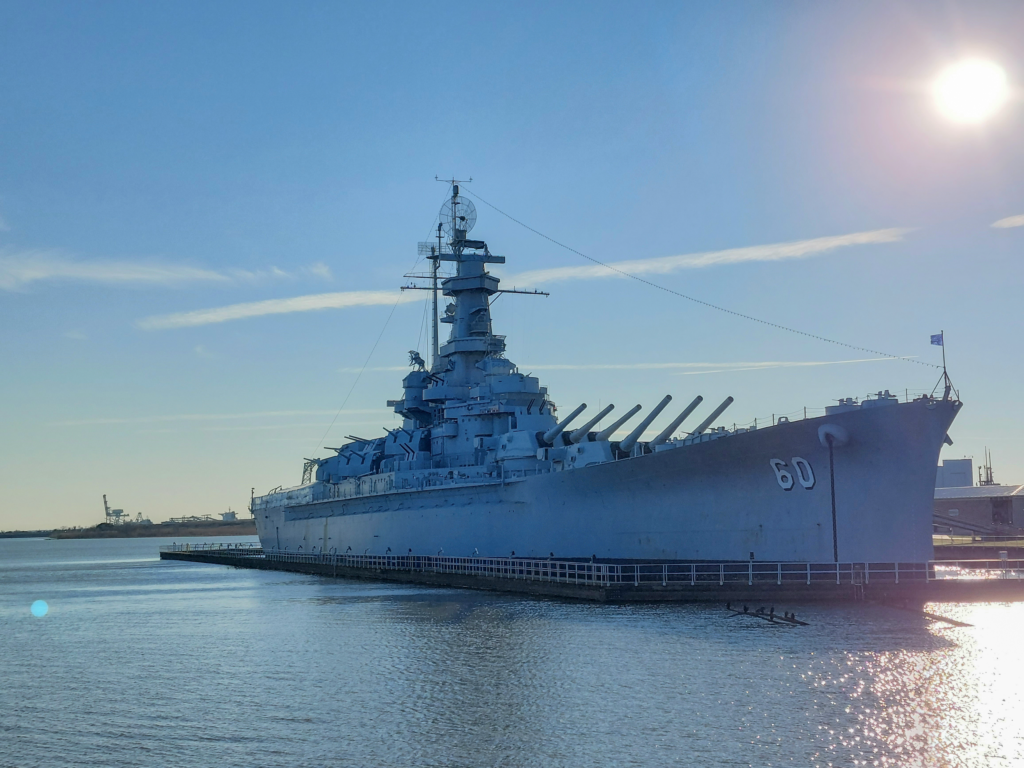

Mobile
Although the City of Mobile attractions technically are not part of the byway, you do go through Mobile. We could have spent several days in Mobile alone. Instead, we chose two museums to visit: The Mobile Carnival Museum and the GulfQuest National Maritime Museum.
5. Mobile Carnival Museum
You may be surprised to learn—like we were—that Mobile is the birthplace of Mardi Gras in the United States. The first Carnival took place on New Year’s Eve of 1830. A group of young men visited open houses held on steamboats, drinking more than their fair share of liquor. After they visited all of the boats, they went into a hardware store owned by one of the men’s families. They grabbed rakes, shovels, and cow bells and made their way through downtown Mobile, making lots of noise. The following year they did it again and for years after that. They formed what they called the Cowbellion de Raken Society. The festivities switched from New Year’s Eve to Fat Tuesday after the Civil War.
Today there are more than 80 different societies in Mobile, 35 of which host a Mardi Gras parade. Even more hold Mardi Gras balls.
The Mobile Carnival Museum shares the city’s Mardi Gras history and includes displays of floats, elaborate “royalty” gowns and robes, and other Mardi Gras memorabilia.
See our full article: Mobile Carnival Museum: How Did Mardi Gras Begin?
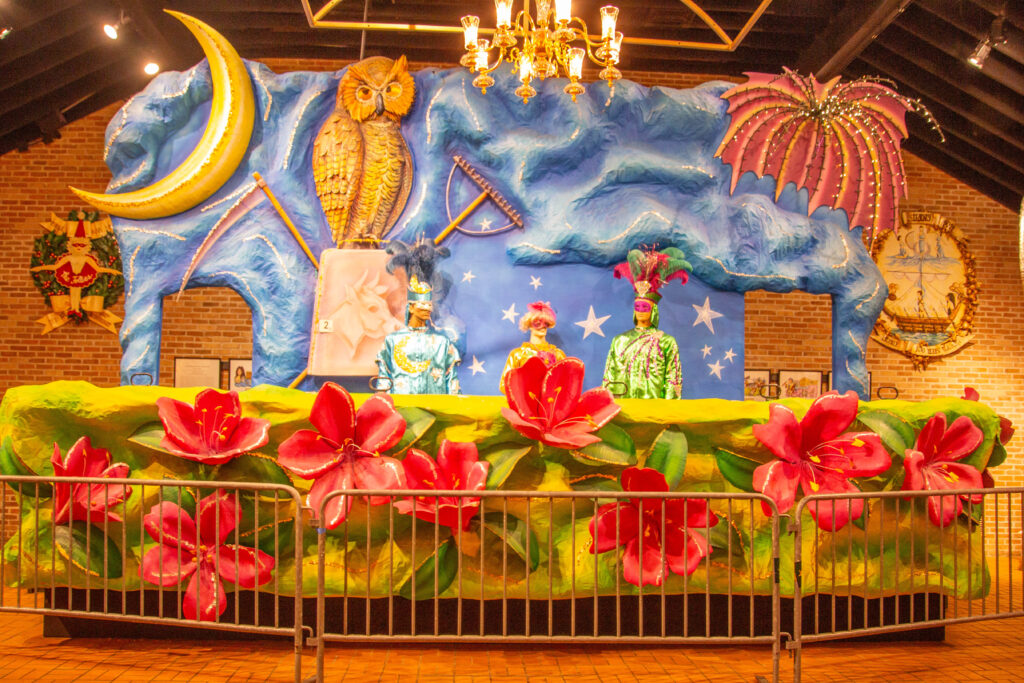
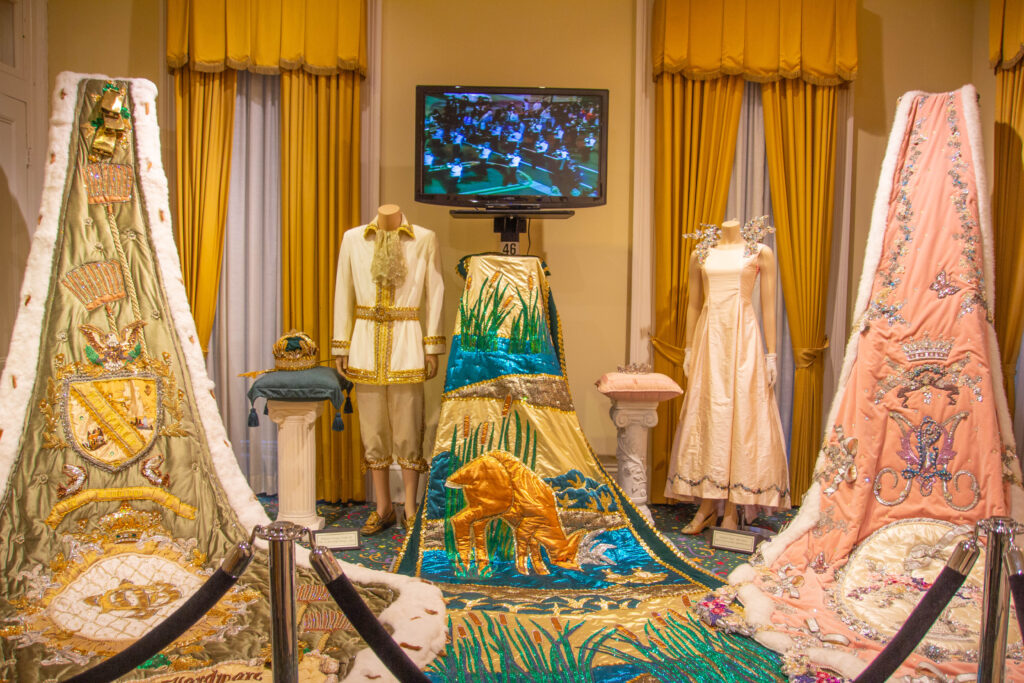
6. GulfQuest Maritime Museum
One of our campground neighbors highly recommended the GulfQuest Maritime Museum in Mobile. We took his recommendation and are glad we did.
The museum focuses on the Gulf Coast region and highlights everything from military history and nautical commerce to coastal environments and marine life.
The first thing we noticed when we entered the museum is the full-size container ship. The ship is so huge, that it houses many of the museum’s five levels of exhibits. The story behind container ships itself is fascinating. The container method, created by Malcom McLean, reduced ship loading and unloading costs from $5.83 per ton to a mere 15.8 cents per ton. It also decreased turnaround time from about a week to eight hours.
We spent several hours exploring the museum and especially enjoyed the many interactive exhibits. In one exhibit, you sit in booths and listen to the stories of fishing, military, and cargo ships while watching the “sea” below your feet. From the top deck, we stepped outside for a great view of the port (where a military ship was docked during the Mardi Gras weekend) and downtown Mobile.
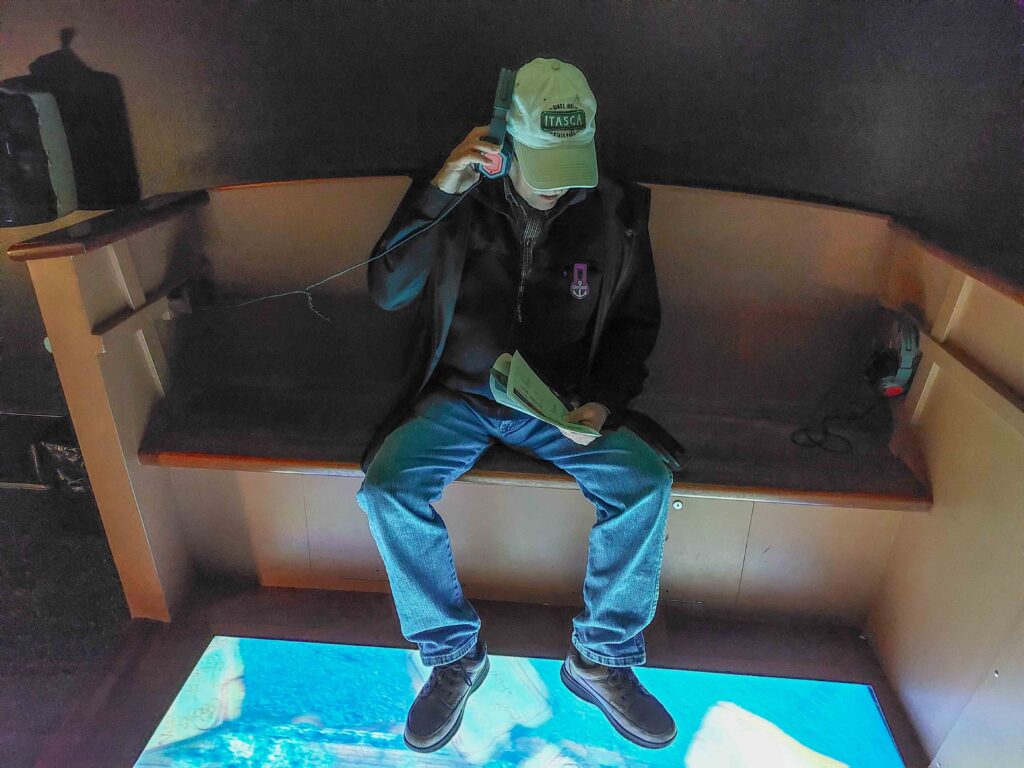
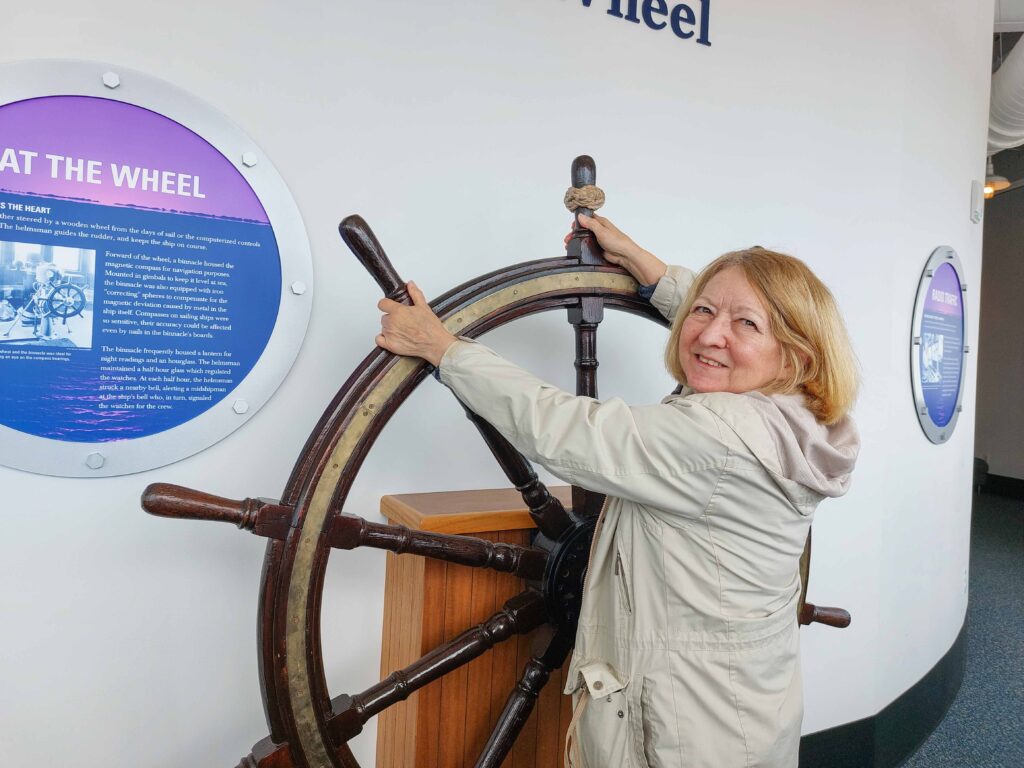
7. Bellingrath Gardens
With sixty-five acres of gorgeous gardens and a 10,500 square-foot English Renaissance-style mansion, we strongly suggest you set aside several hours to explore Bellingrath Gardens. Walter Bellingrath, of Mobile Coca Cola Bottling Company fame, bought the property when it was a rustic fishing camp. His wife, Bessie, an avid gardener, spent five years beautifying it with the help of an architect and forty gardeners.
Besides her love of gardening, Bessie also collected all kinds of things: antiques, china, silver, and more. She was also a great philanthropist, who gave money to the needy left and right but always left people with their dignity intact.
See our full article: The Woman Behind Bellingrath Gardens
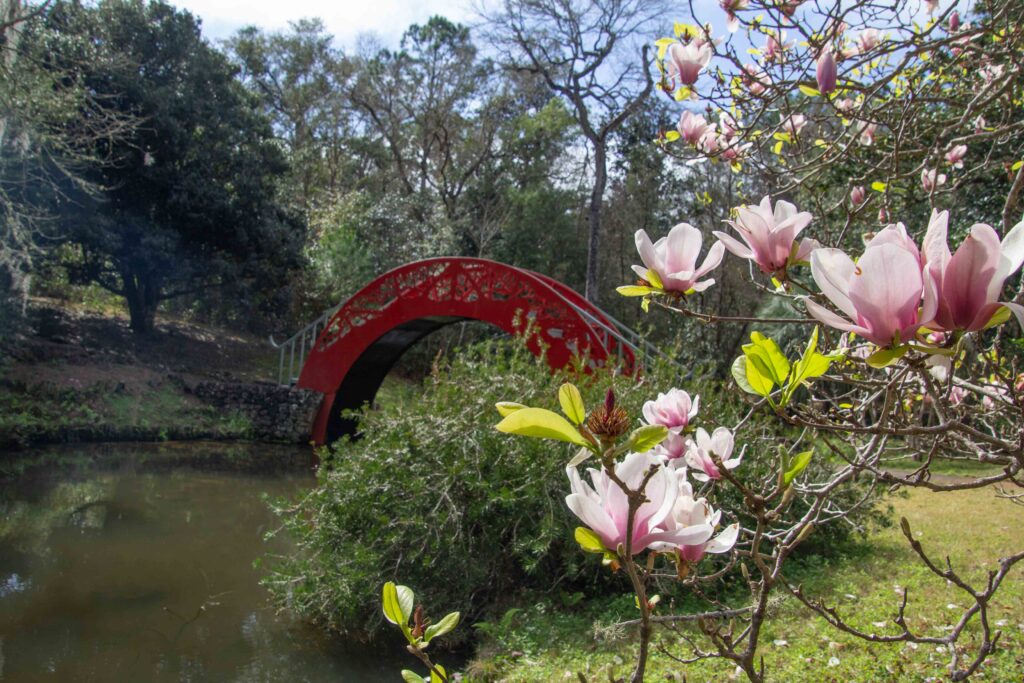
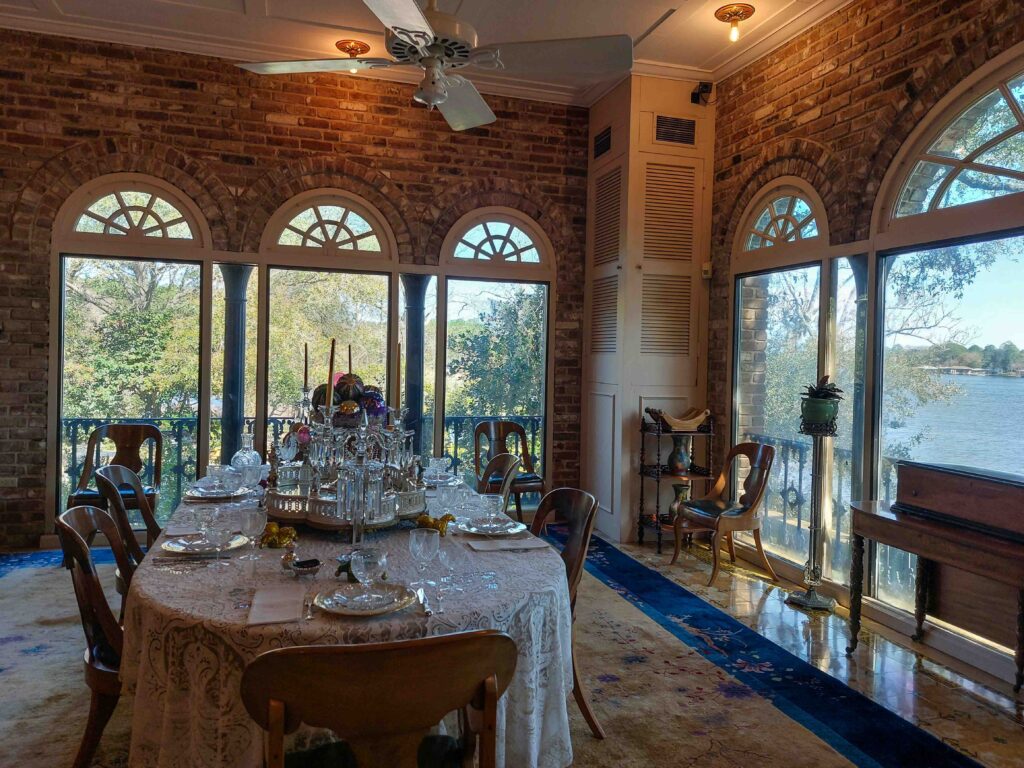
8. Dauphin Island
Dauphin Island offers something for everyone: white sand beaches, fishing spots, plus historical and natural attractions. Many visitors like to bike the length of the island, as well.
We took the self-guided tour of historic Fort Gaines. Fort Gaines has a rich history, especially through the Civil War. We also visited the Alabama Aquarium, which focuses on plants and animal life in local estuary waters, and the Audubon Bird Sanctuary, a temporary home for hundreds of bird species during migratory seasons.
You can reach the island from the west side of Mobile Bay via a bridge. From the east side of Mobile Bay, you must take a toll ferry.
Read our full article: Dauphin Island: 3 History and Nature Attractions to Explore
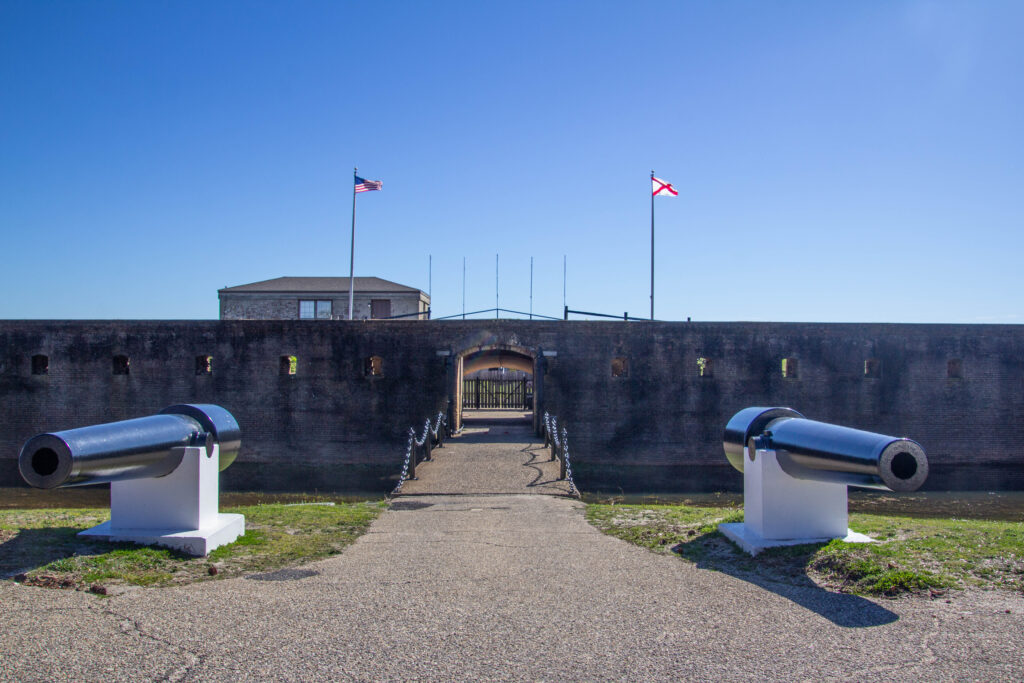
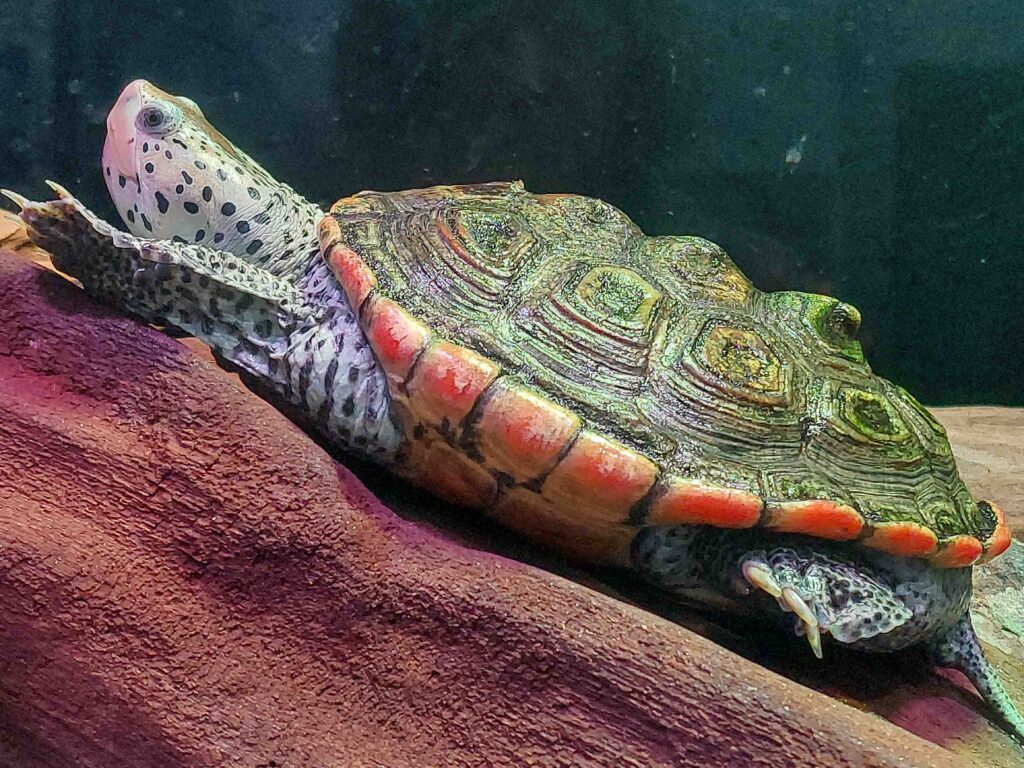
9. Mobile Bay Ferry
We took one day during our month-long Mobile visit to drive the entire Alabama Coastal Connection National Scenic Byway. We drove down the west side of Mobile Bay, across the bridge to Dauphin Island and to the Mobile Bay Ferry.
We’ve ridden several ferries over the years and have always enjoyed them, especially on sunny days. It’s nice to get out of the car during the trip and watch the sea life and other boats and ships as the ferry glides across the glistening water and you feel the warm sun on your face.
On this trip, we noticed a few sea birds hitch a ride on the boat, as well. I can’t blame them. If I was a bird, I’d take the lazy way over the water, too.
The ride takes about 45 minutes, but you have to factor in wait time before you board. The Mobile Bay Ferry ends on the peninsula where Fort Morgan is located.
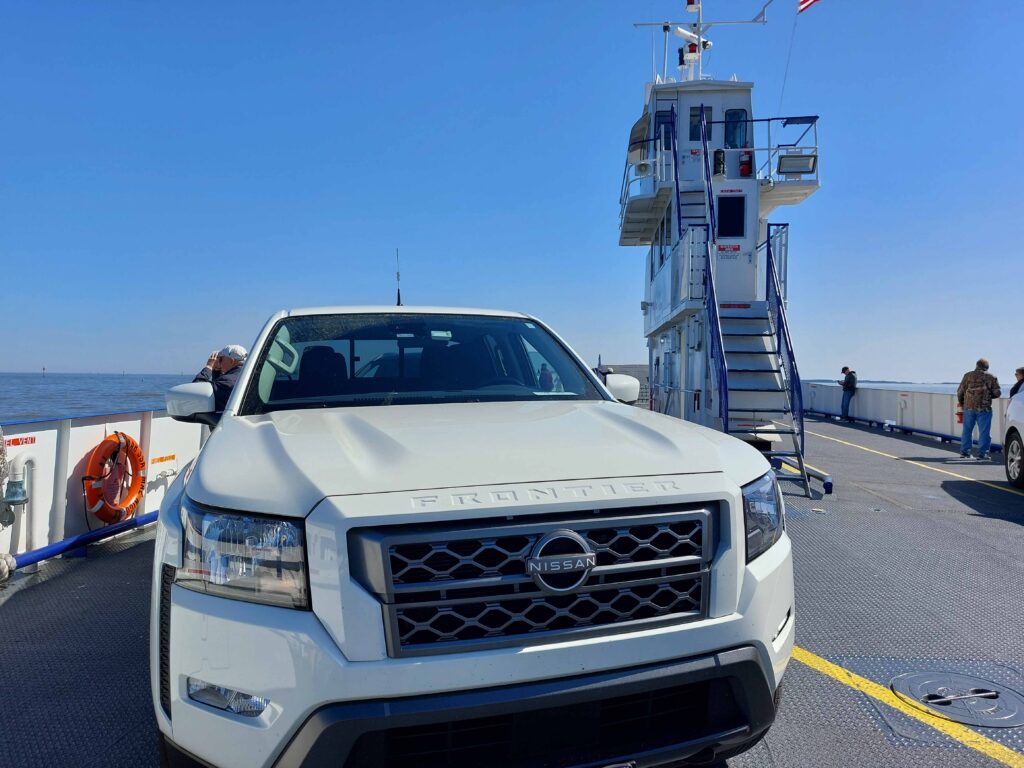
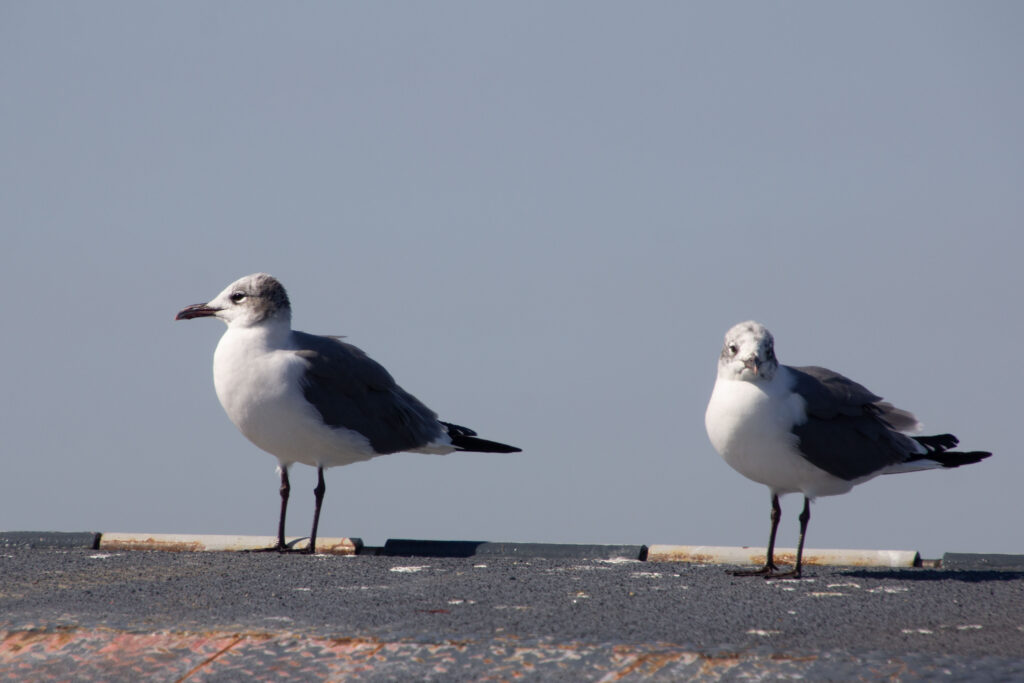
10. Fort Morgan
We didn’t visit Fort Morgan on this trip, as we had gone there the year prior. It’s where we saw our first dolphins in Mobile Bay as we walked along the beach near the fort.
The fort’s history dates back to 1819, when construction began. The U.S. Government contracted with slave owners for labor. Over 200 enslaved men, women, and children manufactured the more than 30 million bricks used in the fort. The fort took 15 years to complete. The tour is self-guided, and there is a small museum on the grounds, as well.
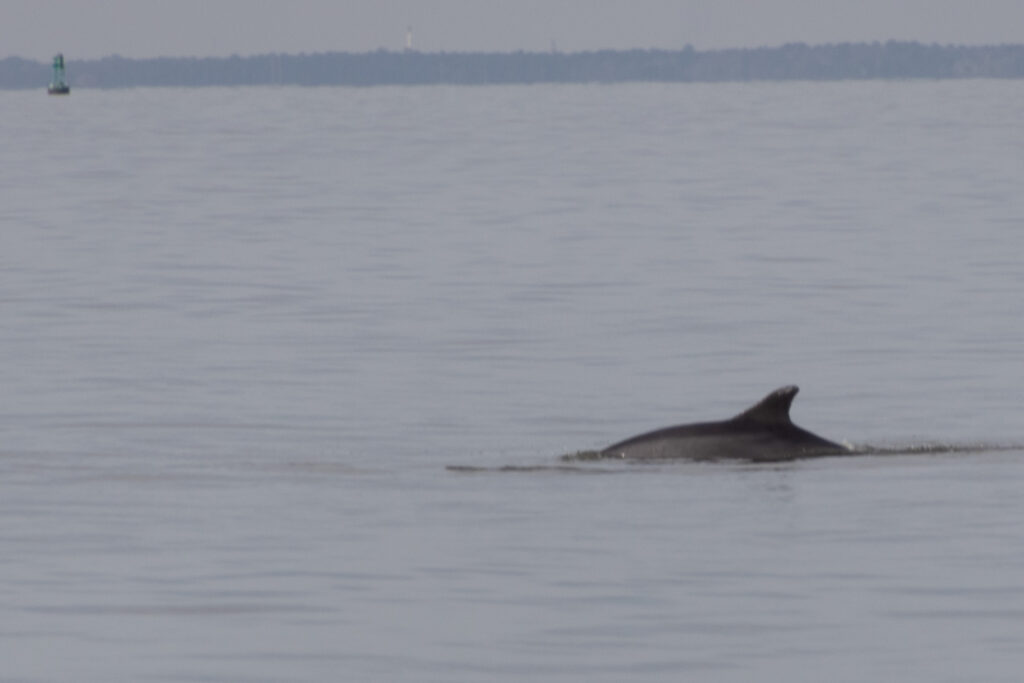
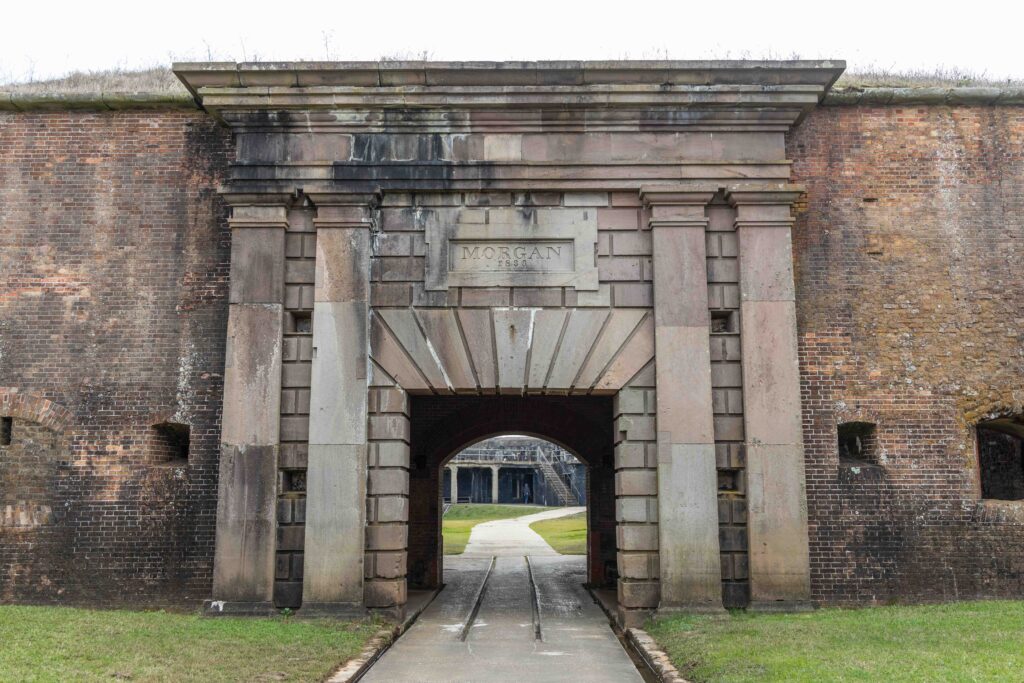
11. Bon Secour National Wildlife Refuge
Driving east on the peninsula from Fort Morgan, along Alabama Highway 180, we came across the Bon Secour National Wildlife Refuge. We made two stops there. The first was to walk along the white-sand beach. I was surprised to see several people fishing while sitting on the beach. I wouldn’t think the water would be deep enough. But then, we did see dolphins frolicking not too far off the shore at Fort Morgan.
Our second stop was at the wildlife refuge visitor center. Here we learned that the Bon Secour National Wildlife Refuge includes 6,700 acres and includes several habitats: beach dunes, pine flatwoods, oak hammocks, and both saltwater and freshwater marshes.
We had a “small world” experience at the visitor center. The woman working there was born one town over from where we live in the Midwest.
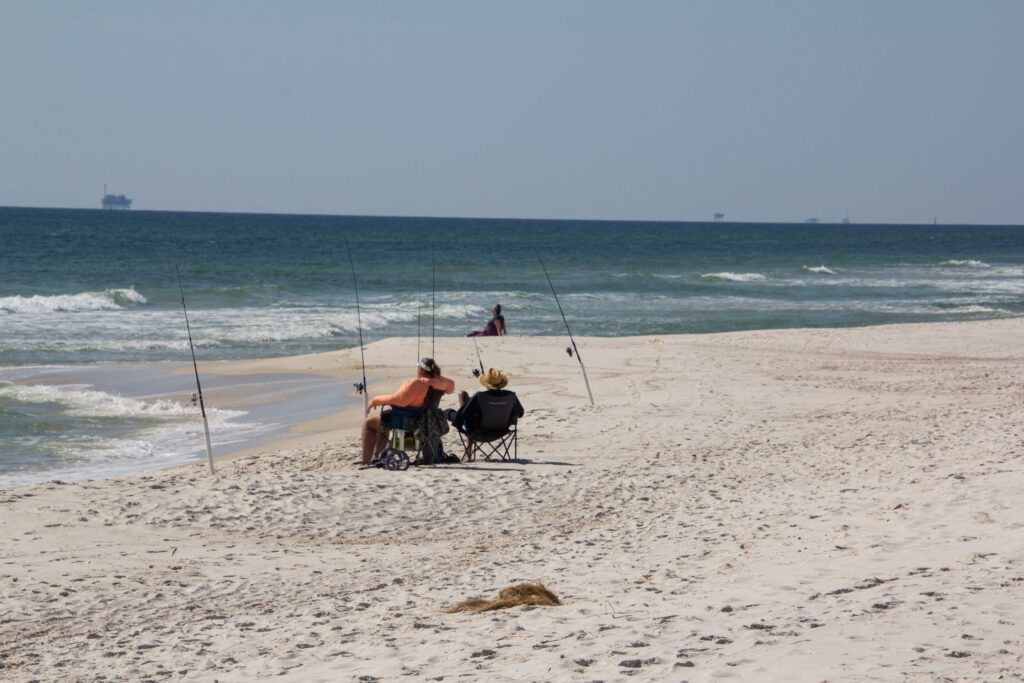
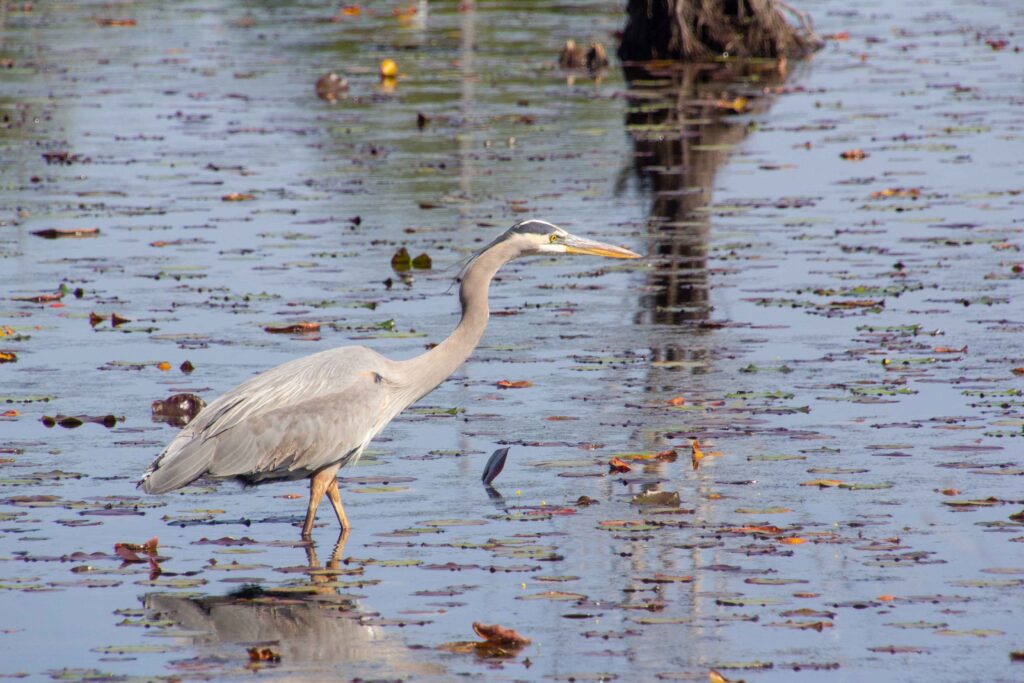
12. Gulf Shores and Orange Beach
Gulf Shores and Orange Beach are two popular resort towns along the south end of the byway. Condos and hotels line the coast here, along the 32 miles of white sand beaches. Restaurants range from seafood (lots of them!) to 50’s-style diners. Some offer dining right on the beach.
Gulf State Park offers several great bike and hiking trails. The campground in the park is so popular, it’s difficult to get a reservation. By luck, we scored a week there in a previous year and camped alongside a canal, within walking distance to the beach. There is so much to do in Gulf Shores and Orange Beach, you can plan several days.

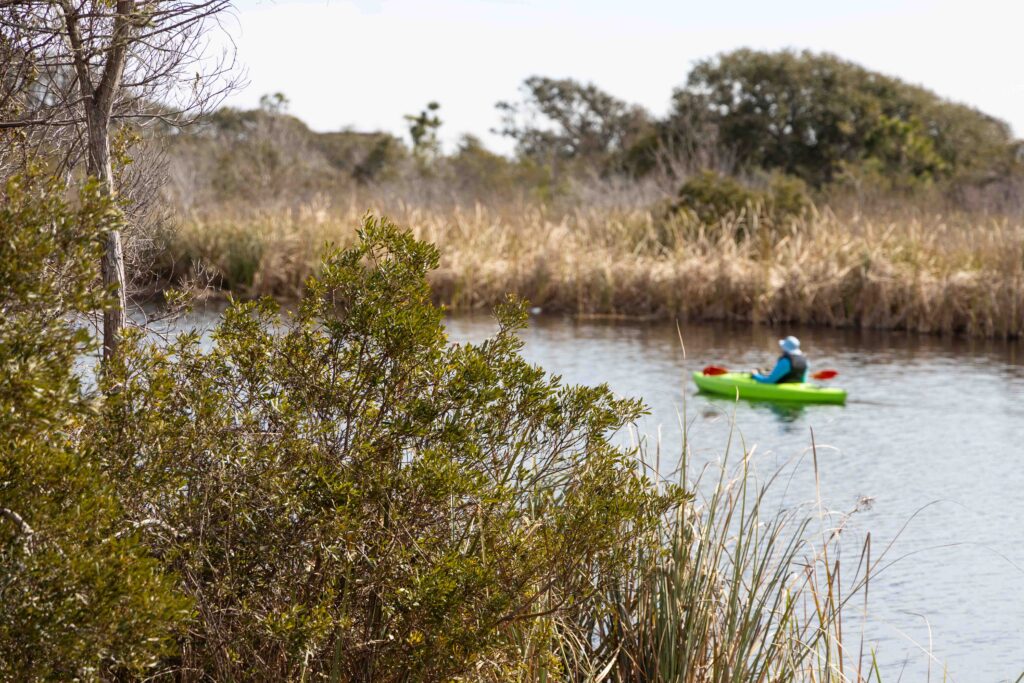
13. Foley Railroad Museum and Model Train Exhibit
Foley, north of Gulf Shores on Route 59, makes a nice day trip, no matter what you like to do. From museums to amusement parks, there is something for everyone. The Foley Railroad Museum has the largest and nicest model railroad layout we’ve ever seen. In the same location is the Depot Museum, which focuses on Foley’s history. We were surprised to learn the city was founded by a Chicagoan.
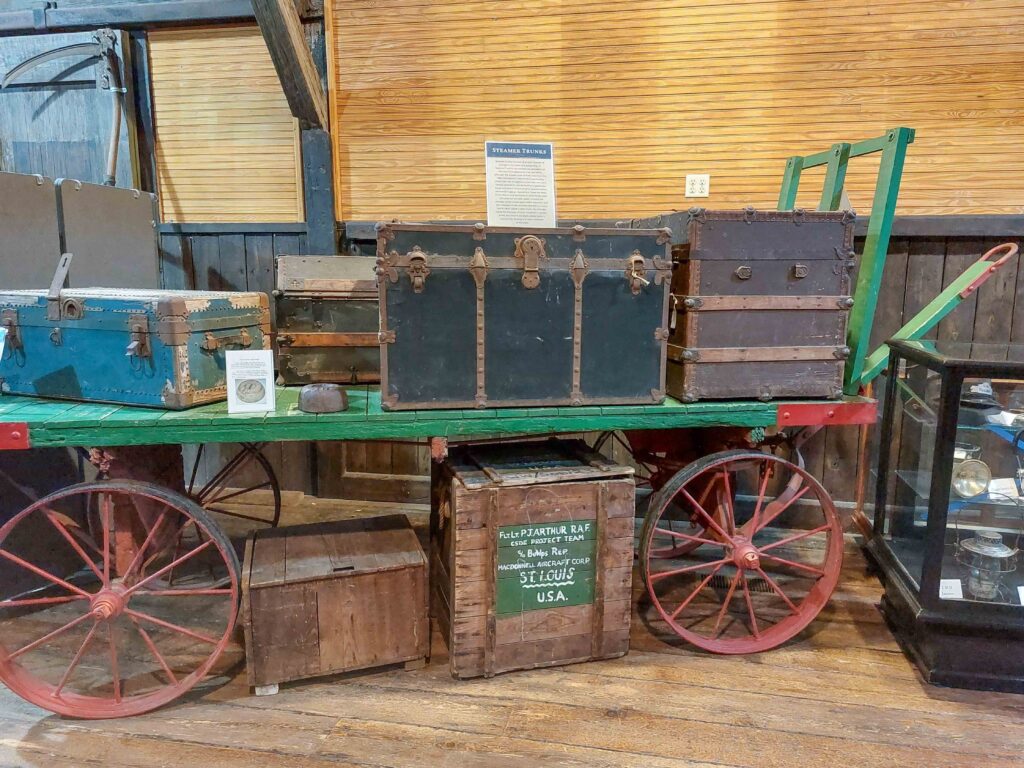
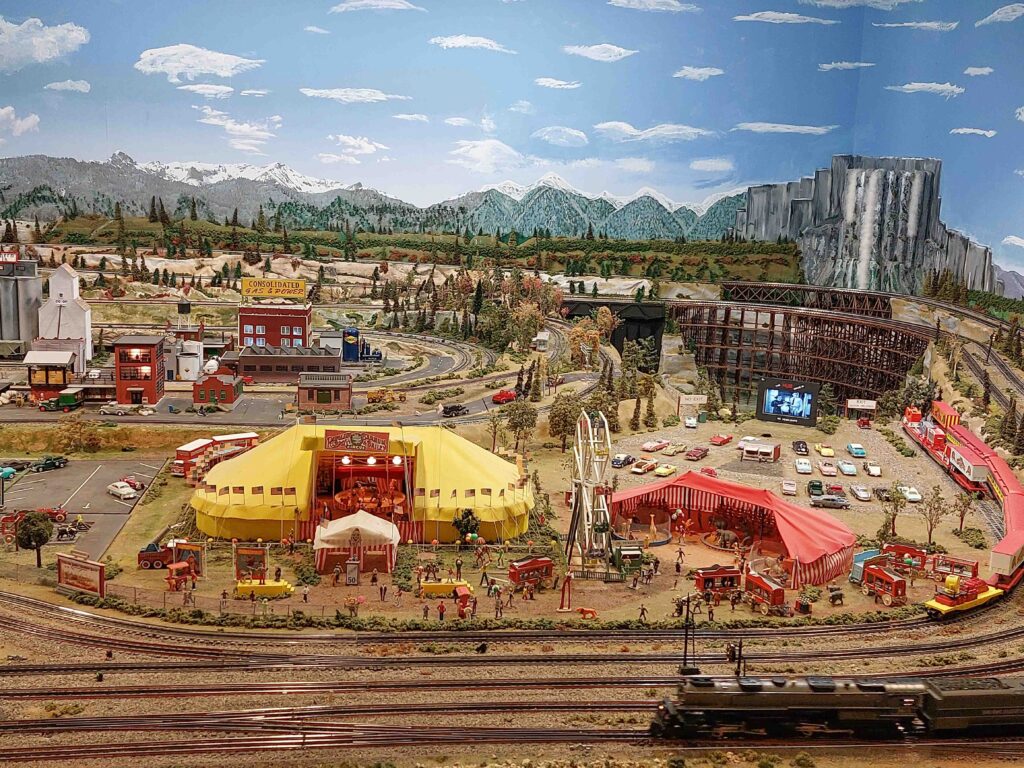
14. Holmes Medical Museum
Kitty-corner from the Depot Museum is the Holmes Medical Museum. Honestly, the museum didn’t sound very appealing to me, but once I went in, I was fascinated. The tiny former hospital is on the upper level of the building, and served as Baldwin County’s hospital until 1958. It’s a far cry from any hospital I’ve ever been in! When a larger hospital was built, this one was abandoned, with all the equipment left in place.
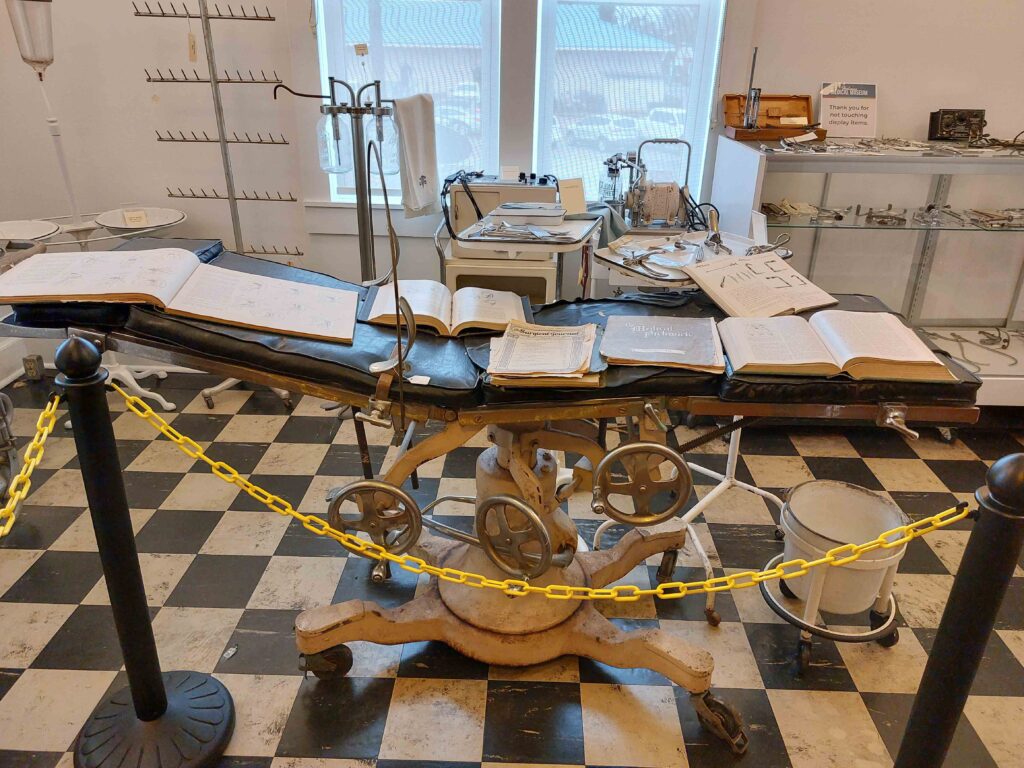
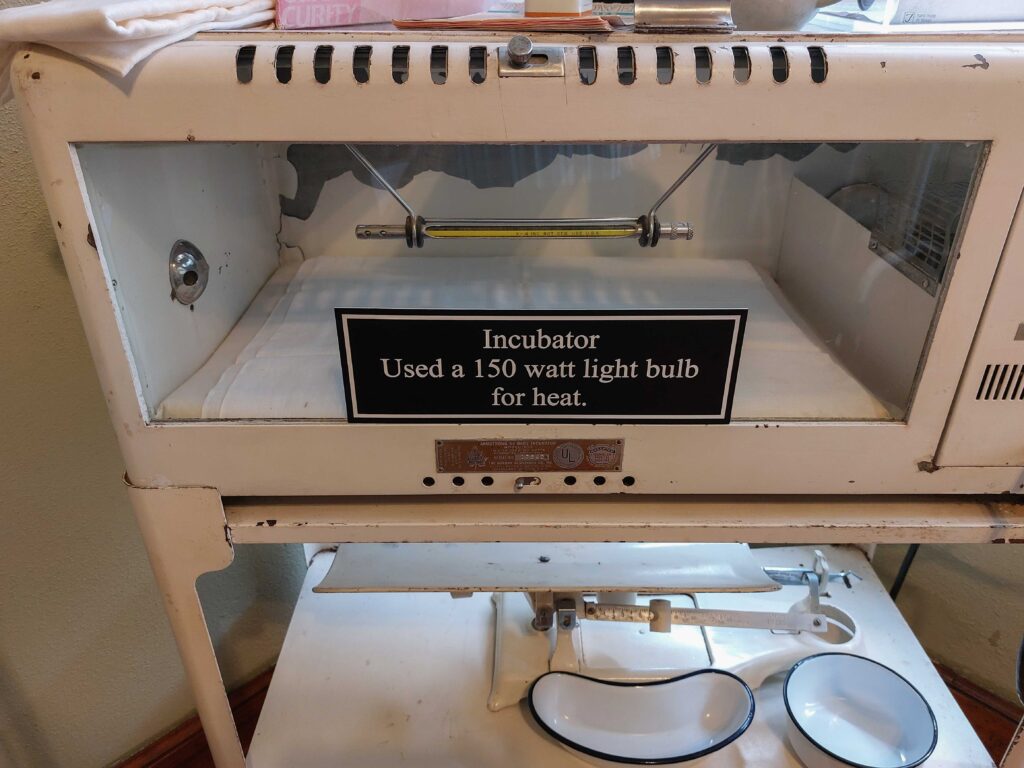
15. Stacey’s Old Tyme Soda Fountain
At the end of the same block is Stacey’s Old Tyme Soda Fountain. We couldn’t resist going in for an ice cream treat. We both ordered a chocolate egg cream, which didn’t sound appetizing to me until I found out the ingredients…
View our full article: Foley, Alabama: 3 Museums and a Soda Fountain
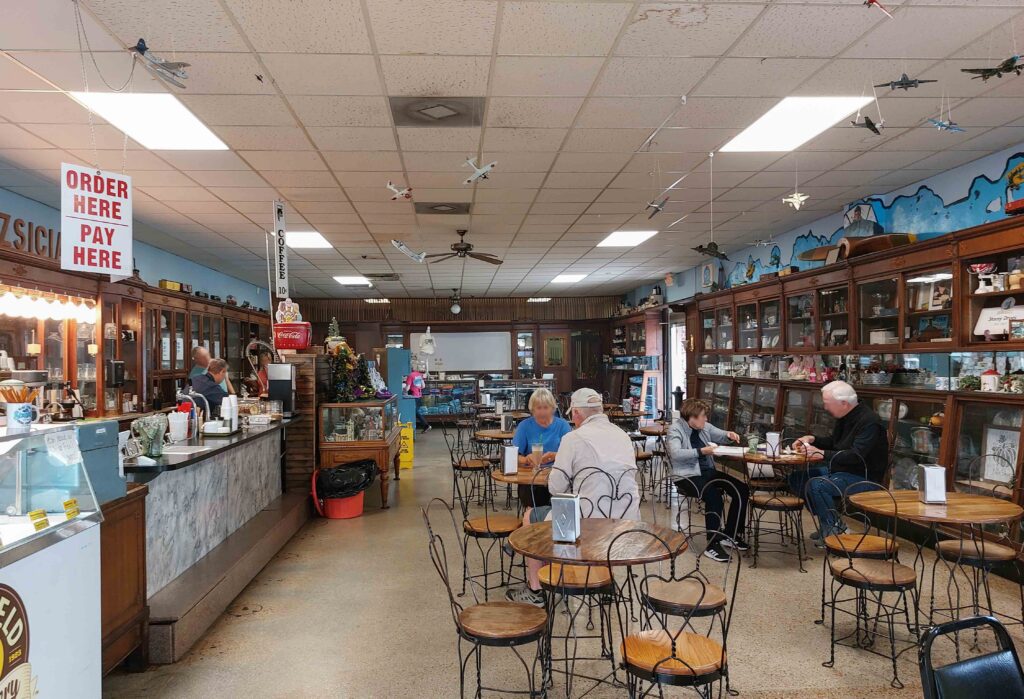
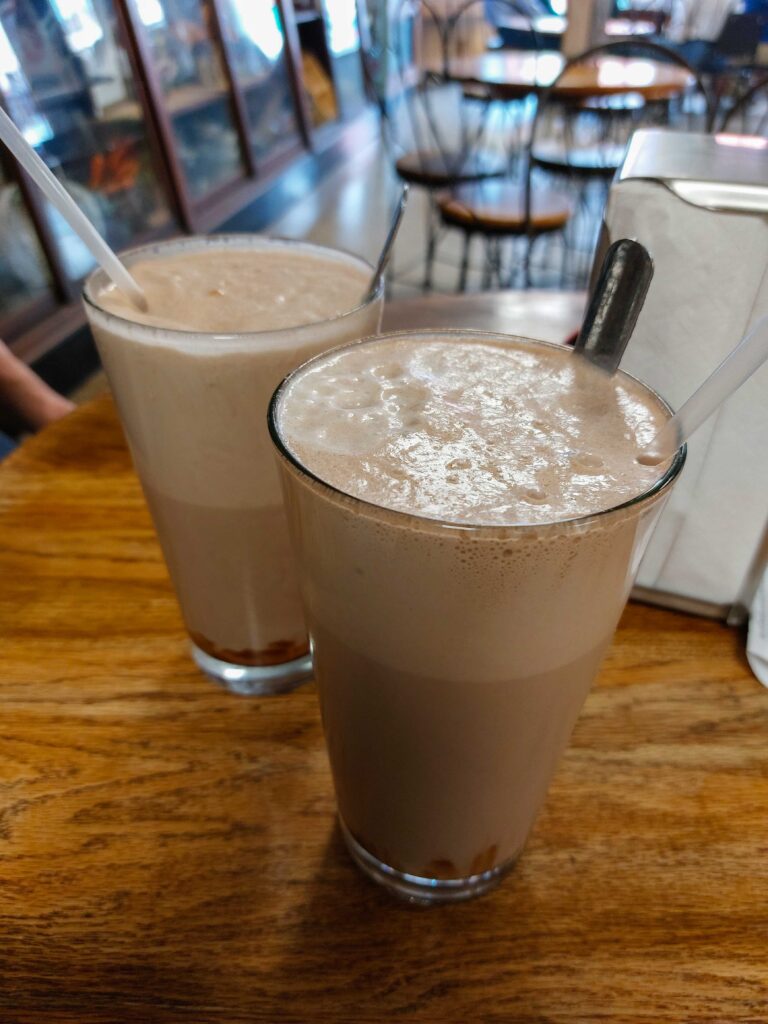
16. Weeks Bay Visitor Center
Weeks Bay is an estuary in Baldwin County. We learned at the visitor center that an estuary is “a semi-enclosed body of water where fresh water from rivers mixes with salt water from the oceans.” In the case of Weeks Bay estuary, the in-flowing water is from the Magnolia and Fish Rivers. A narrow path connects the estuary to Mobile Bay.
After browsing through the visitor center exhibits, we hiked a short nature trail, then took the boardwalk behind the building to get a closer look at the estuary. Down the road we found another parking area for the estuary and climbed up a viewing platform. There weren’t many people there on the cloudy weekday morning, but it looked like it’s a good fishing spot.
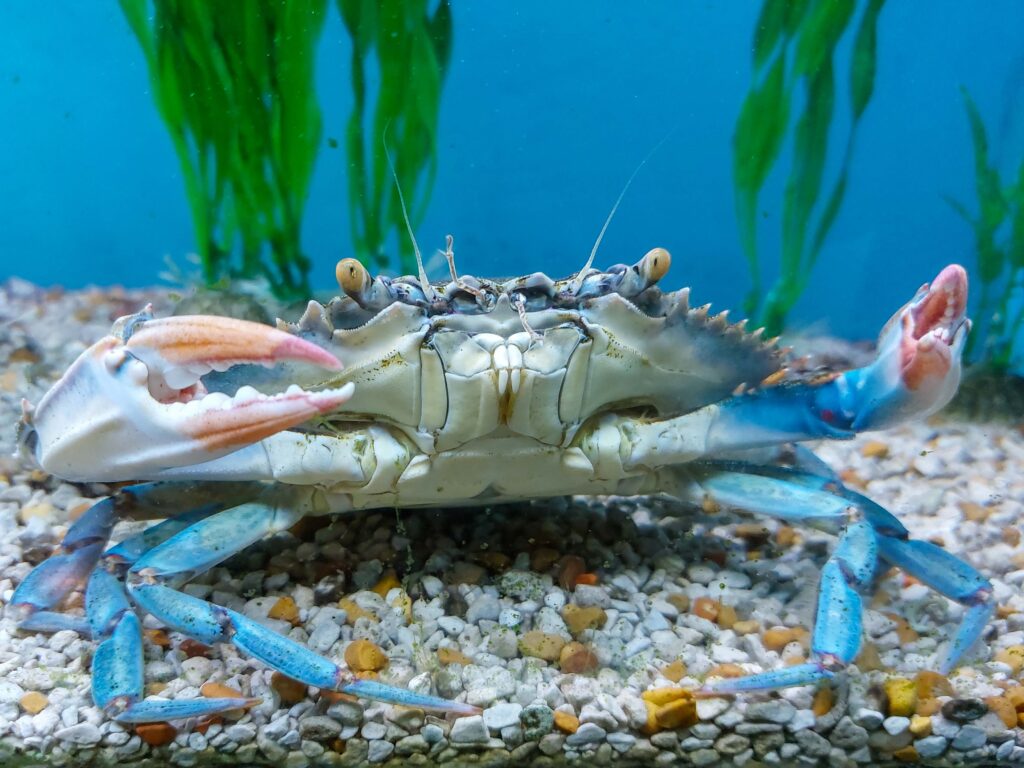
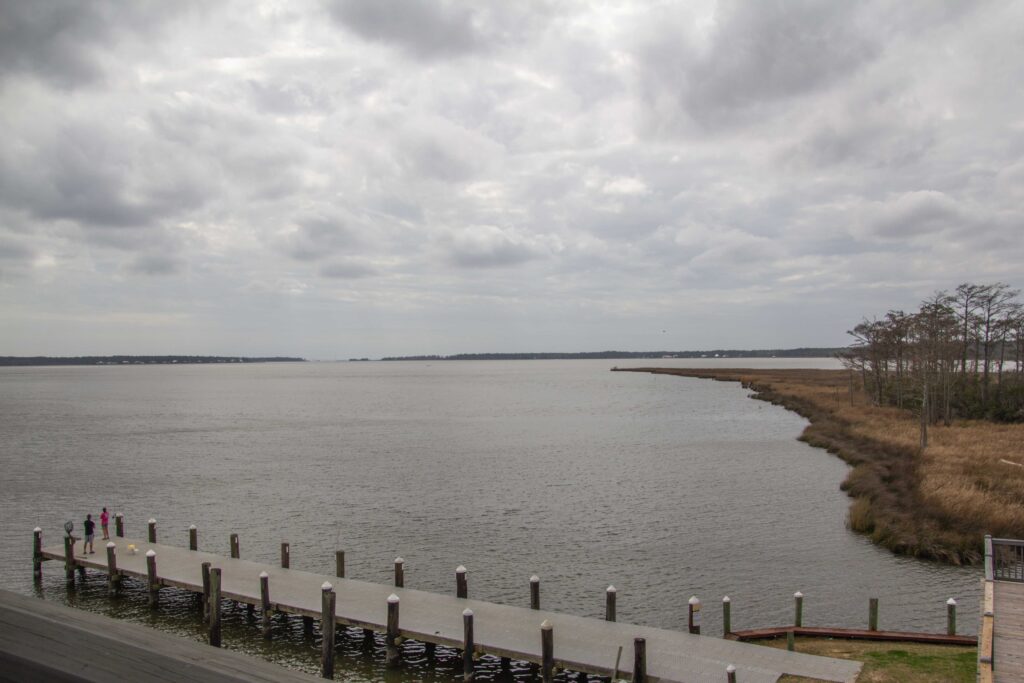
17. Pitcher Plant Bog
A few minutes away, we came to the Pitcher Plant Bog. Another boardwalk above the bog leads out to the estuary. Being February, the bog wasn’t in bloom, but I imagine it’s beautiful when it’s filled with large pink funnel-shaped flowers. The flowers aren’t as gentle as they may look. They’re actually carnivorous, trapping insects and even small animals like salamanders in them. The insects and small animals replenish needed nourishment into the bog.
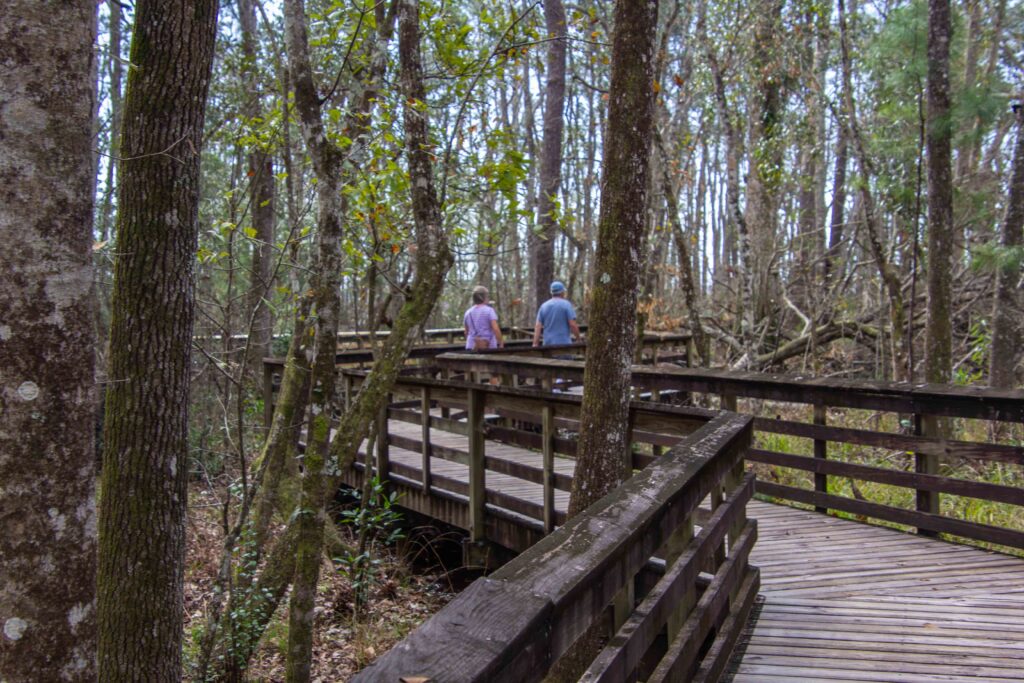
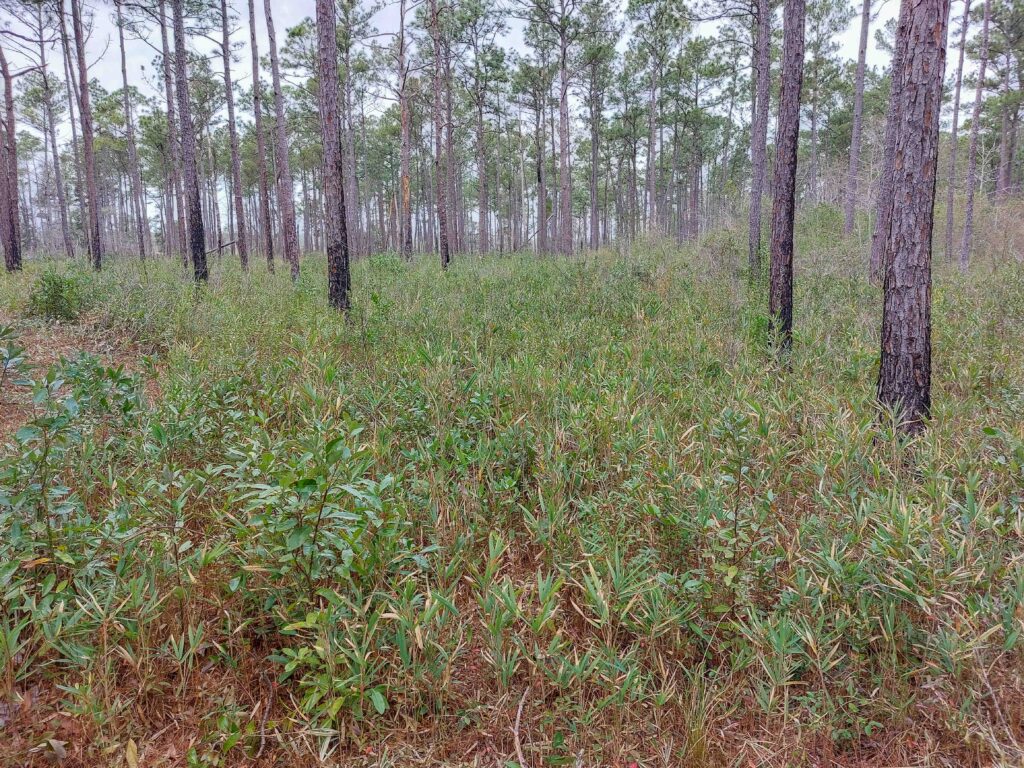
18. Fairhope
The buildings in downtown Fairhope are reminiscent of New Orleans, many with iron-lace trimmed balconies. Browse more than 85 shops and choose from almost 30 restaurants for dining. Shops range from antiques to boutiques. I can’t resist a tea shop or an oil-and-vinegar store, and Fairhope had both.
The Fairhope Museum of History is downtown, as well, located in the former city hall building. It’s here where we learned about Fairhope’s unique founding as a single tax colony, which still exists today in the original district. The only other city in the United States that operates as a single tax colony is Arden, Delaware.
When we finished shopping, our last stop of the day was the Fairhope Pier. The pier and the beautifully manicured park grounds near it are considered Fairhope’s “town square.” It’s the gathering place for residents and visitors alike. The pier dates back to around 1894 and juts out 1,448 feet over Mobile Bay. It was relaxing to sit on a bench at the end of the pier, breathe in the sea air and listen to the gentle swoosh of the waves.
See our full article: Fairhope, Alabama: A Single-Tax Colony
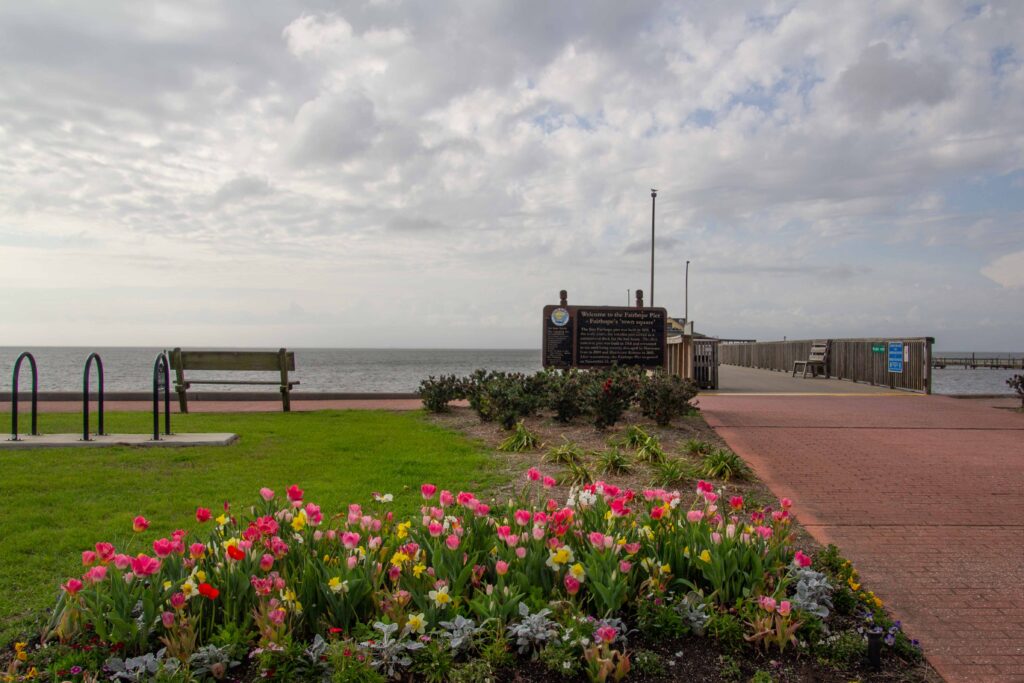
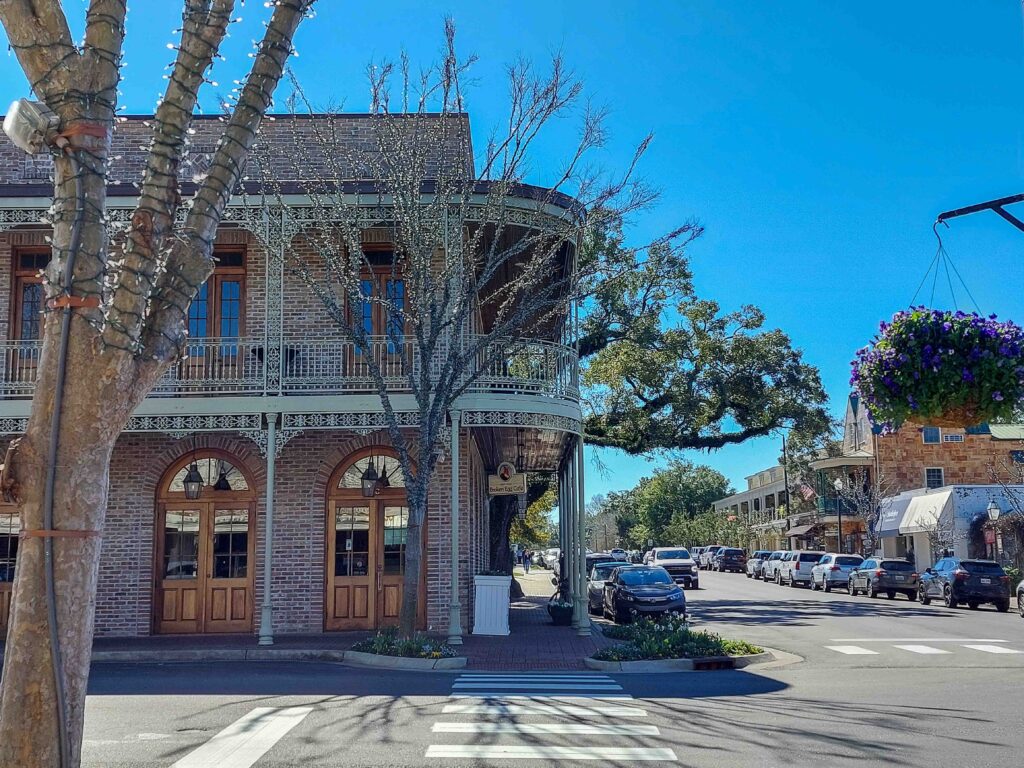
19. Old Methodist Church Museum
The oldest church building in Daphne is now the Daphne History Museum. The museum is small but tells a great story.
Artifacts from the Original Church
Some items from the original church remain, including some of the pews and the pulpit. The chandelier is original as well, although it was electrified at some point.
You can also see what they called the Slave Gallery. It’s an upper balcony, what I thought may have been the choir loft. But, although slaves were allowed to attend church, they were required to sit up there, even on the hottest days.
The Church Cemetery
A small cemetery is outside the building, with the oldest grave dating back to 1847. Although the cemetery is considered closed, there are still some headstones awaiting arrival. So, on occasion, there are still burials.
The Story of the Stolen County Seat
The town of Blakely was the original seat of Baldwin County. When the town no longer existed (see Blakely State Park below), Daphne became the county seat. However, businessmen from the town of Bay Minette petitioned the state to take over. Permission was granted, but they had to wait until their courthouse was completed.
Here’s where the story changes depending on who tells it. One story says Daphne wasn’t yet required to give up control. Another story says yes, they were supposed to, but refused.
Either way, one night the sheriff and deputy were called out on a ruse to “investigate a murder.” While they were gone, a group of men from Bay Minette broke into the courthouse and stole all the records. They even dismantled and moved the jail cell, prisoner and all.
Today, that very cell can be seen at the Fairhope Museum of History.
A Rare Sea Life Phenomenon
This museum is also where we learned about the jubilee, a rare phenomenon that leaves many bottom-dwelling sea creatures on or near the shore and easy to catch.
The Daphne History Museum (also called the Old Methodist Church Museum) is located at 405 Cryer Avenue in Daphne, Alabama. It’s open on Wednesday, Friday, and Saturday. Check the website for hours and other details.
Read our full article: Jubilee: A Rare Phenomenon on Mobile Bay
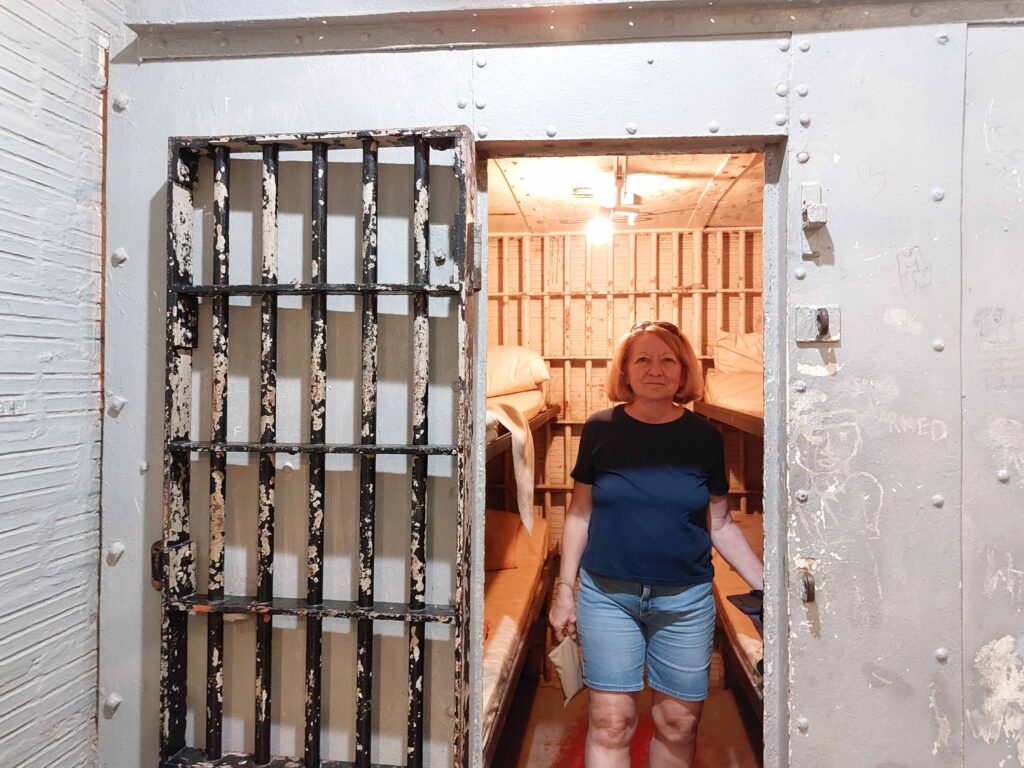
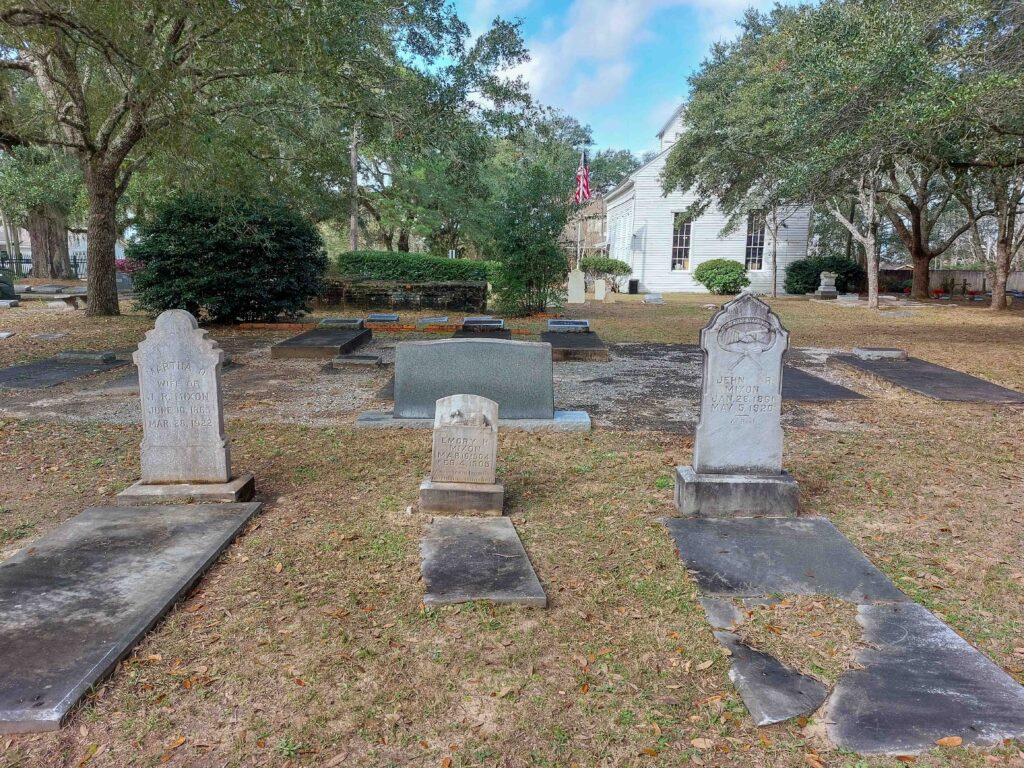
20. Historic Blakeley State Park
At one time the town of Blakeley, founded in 1814, was the Baldwin county seat and was as large as Mobile. Of course, that was when Mobile was much smaller. Unfortunately, with commercial competition from Mobile, high land prices, and a yellow fever epidemic, the town declined and became pretty much a ghost town.
The largest Civil War battle in Alabama took place at Fort Blakeley, made up of mostly earthen berms. At the time, the town had dwindled down to only about a hundred people. Only a few days after the Union took Blakeley, they took control of Mobile, as well.
The area that was Blakeley is now Blakeley State Park, which has preserved as much of the town history as possible, including the battlefield. Building frames, referred to as “ghost structures” represent homes and businesses of the original town.
The park offers an audio/driving tour. You’ll get a map and brochure at the park entrance. The brochure includes a short description of each tour stop. It also includes a phone number you can dial on your cell phone for longer descriptions.
See our full article: Historic Blakeley State Park: Ghost Town and Battlefield
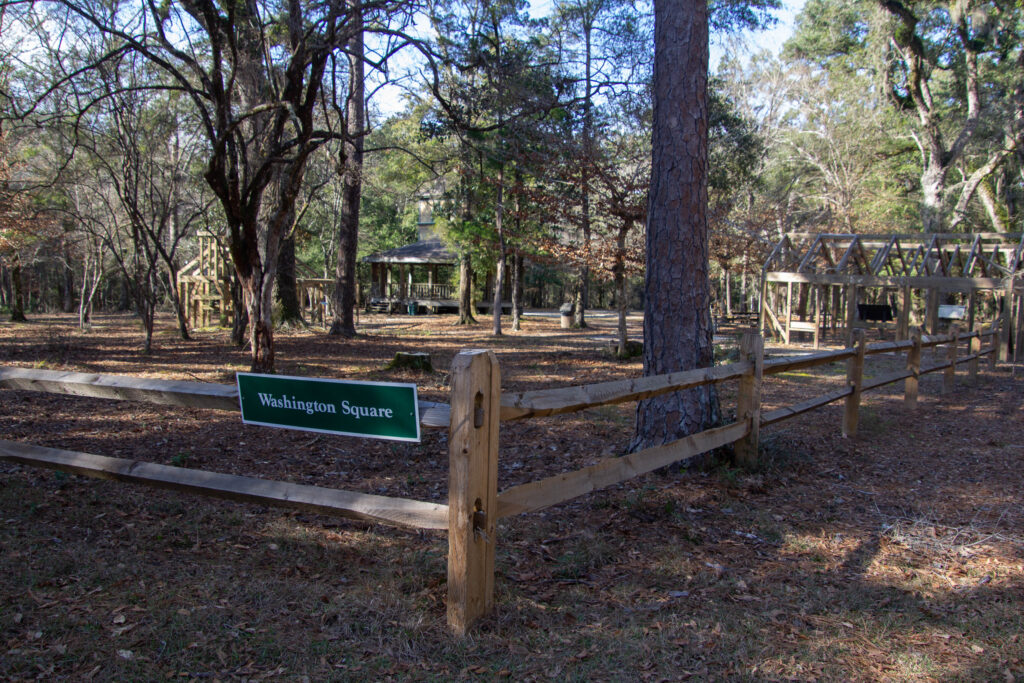
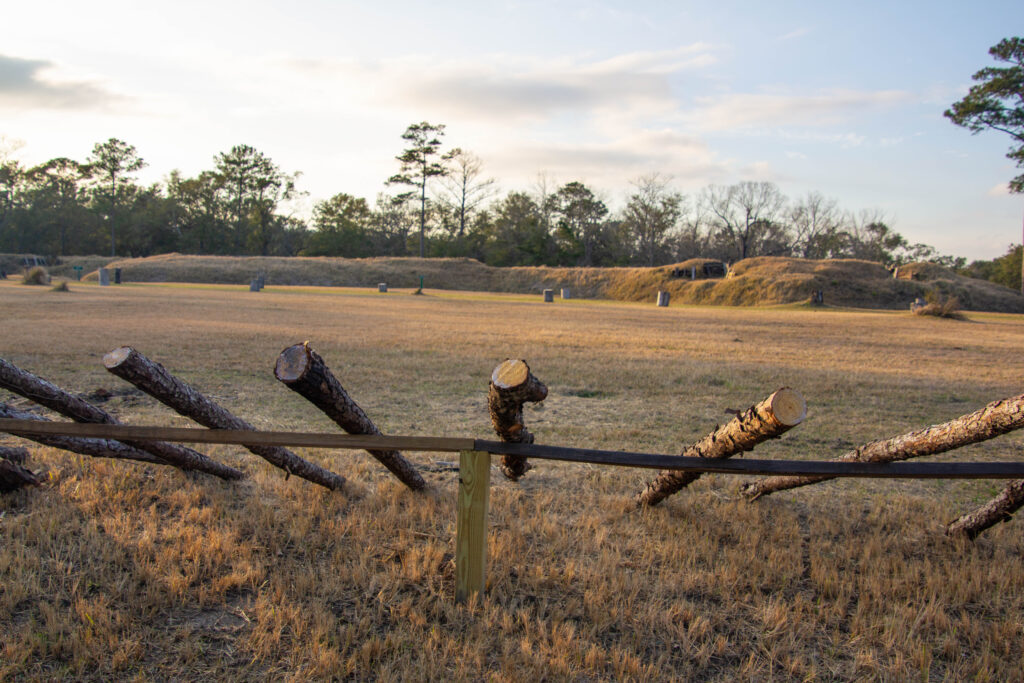
If you explore the Alabama Coastal Connection National Scenic Byway…
Even though we spent 28 days in the area, there were a handful of attractions along Alabama’s Coastal Connection Scenic Byway that we didn’t get a chance to visit. For more information about the entire byway, including an interactive map, visit the byway website.

